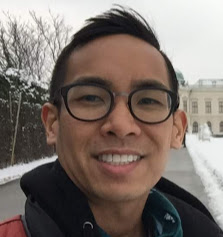It’s hard to believe that it’s been exactly one year to the day that I took the plunge into uncertainty. I had recently quit my job, had moved back to LA, and was gearing up for a nine-month sojourn in Taiwan before returning to grad school. I had no idea what I was doing. Some supported my decision and called it brave, while others called it selfish and reckless. Regardless, the decision to leave had passed. I had made my bed, and it was now time to lie in it.
A year later, and I’m amazed at how much my plans changed. I never stayed in Taiwan for nine months. I studied for a semester, then briefly traveled around Southeast Asia before returning back to the States. I deferred (then declined) my offer for grad school; instead, I found a career with a great company working on some really cool projects.
If there’s one thing that I’ve learned from this past year of uncertainty, it’s this: JUST DO IT!
Quit thinking so much. Just do it.
Obviously, easier said than done. As a researcher, I tend to think a lot – in some cases, way too much. Moreover, as someone who has a low tolerance for risk, thinking through possible consequences is just a logical part of the process of decision making. To the point that thinking about something feels more important than doing something about it. The issue, however, is of course that we get into analysis paralysis. You know, that feeling where you’ve spent weeks (or months, or even years) thinking about doing something, without ever having done anything at all. This has got to stop. I’m serious!
The Just Do It Test
Over the course of the year, I’ve developed implicitly a quick test to help me in all my decision making. It’s really simple actually. I just ask these three questions:
- What do I want to do? (i.e., specific objective)
- Why do I want to do it? (i.e., commitment assessment)
- What will it take to do it? (i.e., resource allocation)
It’s my own way of thinking whether something is worthwhile to pursue. While there’s nothing earth shattering about each question, the difference I think is that I always impose a time limit to consider these questions. For me, that time limit is one season.
Especially for really drastic changes, such as quitting one’s job, embarking on a new venture, or other endeavor, I think a full 90 days provides more than enough time to really assess the pros and cons of any major decision. If after three months the answers to these questions change, I either drop the plan and cut losses, or head back to the drawing board to consider alternatives. Some might find a full season too much or too little time, but that duration is reflective of my own personal tolerance for risk.
So there you go. Those questions are what helped me to really get through this year of uncertainty. It helped me decide not to stay in Taiwan, to travel around Southeast Asia, to move back to DC, to not go to grad school, to find a career, etc.
I’d love to learn about what are the critical pieces you consider whenever you need to make a critical juncture!
